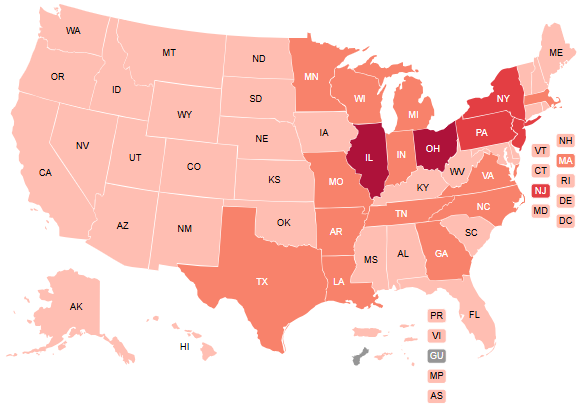April 11, 2025
Attacks on Lead Protections Threaten Nation’s Drinking Water
The Trump administration and certain members of Congress are trying to roll back protections for lead in drinking water. But there are ways to fight back.
There is no safe level of lead for anyone, and exposure to lead can cause irreversible developmental harm in children, as well as memory loss and reproductive impairment in adults.
Yet millions of families across the U.S. remain exposed to toxic lead in their drinking water.
What is Earthjustice doing?
Earthjustice has worked for years alongside our partners and clients to strengthen protections around lead contamination.
In 2024, our work helped compel the U.S. Environmental Protection Agency to mandate the replacement of most lead service water lines in the country within a decade. Congress then set aside billions of dollars to help pay for this widely popular investment.
Lead is Still in Our Pipes
There are over 8 million projected lead service lines in the U.S. — 8% of all service lines. Nearly half are found in Rust Belt states.

Lead service lines (Projected number)
There are over 8 million projected lead service lines in the U.S. — 8% of all service lines. Nearly half are found in Rust Belt states.
What’s happening now?
The Trump administration and some members of Congress tried to gut these basic health and safety protections, threatening the drinking water of an estimated 22 million people across the country.
We will not cede any ground on the progress we’ve made.
| Alabama | 88,409 |
| Alaska | 1,084 |
| American Samoa | 11 |
| Arizona | 11,532 |
| Arkansas | 169,026 |
| California | 13,840 |
| Colorado | 110,847 |
| Connecticut | 52,774 |
| Delaware | 34,309 |
| District of Columbia | 65,801 |
| Florida | 64,000 |
| Georgia | 234,073 |
| Guam | 0 |
| Hawaii | 8,410 |
| Idaho | 41,545 |
| Illinois | 1,071,355 |
| Indiana | 263,247 |
| Iowa | 98,230 |
| Kansas | 69,408 |
| Kentucky | 120,963 |
| Louisiana | 266,933 |
| Maine | 16,179 |
| Maryland | 97,543 |
| Massachusetts | 190,674 |
| Michigan | 245,236 |
| Minnesota | 359,012 |
| Mississippi | 11,326 |
| Missouri | 162,386 |
| Montana | 10,737 |
| Nebraska | 46,822 |
| Nevada | 6,783 |
| New Hampshire | 14,149 |
| New Jersey | 527,686 |
| New Mexico | 6,230 |
| New York | 555,696 |
| North Carolina | 311,173 |
| North Dakota | 22,656 |
| Northern Mariana Islands | 36 |
| Ohio | 809,990 |
| Oklahoma | 28,866 |
| Oregon | 3,883 |
| Pennsylvania | 662,717 |
| Puerto Rico | 45,284 |
| Rhode Island | 62,324 |
| South Carolina | 103,469 |
| South Dakota | 7,101 |
| Tennessee | 351,768 |
| Texas | 190,000 |
| Utah | 19,181 |
| Vermont | 4,934 |
| Virgin Islands | 17 |
| Virginia | 187,187 |
| Washington | 22,495 |
| West Virginia | 20,592 |
| Wisconsin | 343,834 |
| Wyoming | 12,380 |
“Service lines” are pipes connecting your utility’s main water line to the plumbing system of houses, apartment buildings, and other structures.
If any part of the pipe is made of lead, it is a “lead service line.”
Lead service lines were commonly installed through the mid-20th century. Congress banned new lead service lines in 1986. But millions of existing lead service lines still remain today.
Map Data Sources
- U.S. EPA, 7th Drinking Water Infrastructure Needs Survey and Assessment, April 2023
- Florida and Texas data revised by EPA in 2025. NGOs and advocates consider Florida’s data to be unreliable.
Map Design: Casey Chin / Earthjustice
Established in 1989, Earthjustice's Policy & Legislation team works with champions in Congress to craft legislation that supports and extends our legal gains.